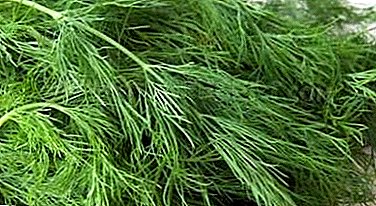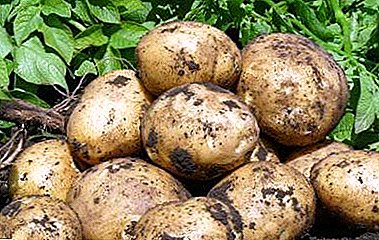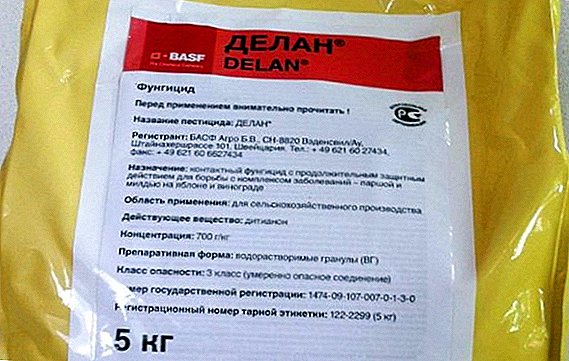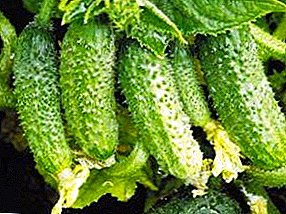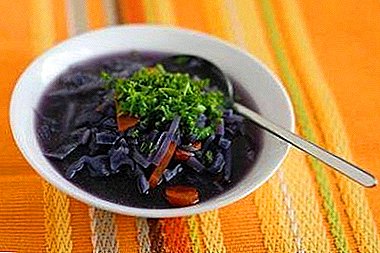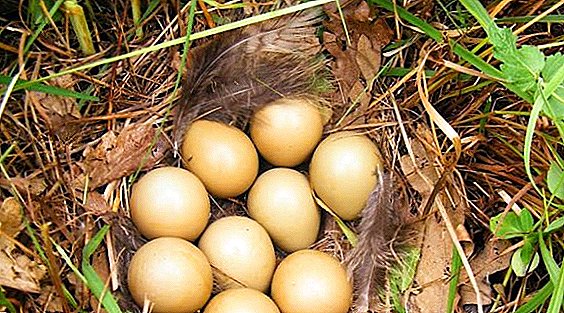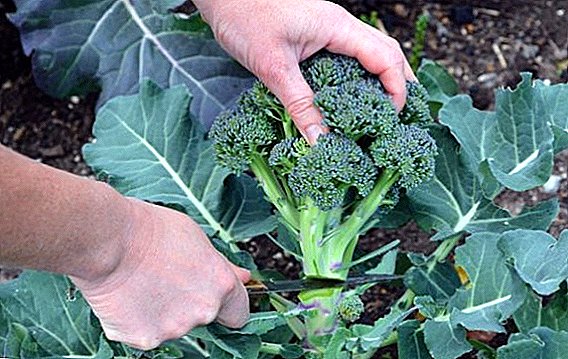
Fusarium is a very common and dangerous fungal disease that can cause a wide variety of plants at any age.
This disease is focal in nature, penetrates through the soil and small wounds of the plant. The most susceptible to fusarium weakened plants.
In the article we will talk about the symptoms of fusarial wilting of plants, about the possible danger of this disease and the conditions of its development, as well as give information about the methods of treatment and some useful tips on preventive measures.
What it is?
Fusarium wilt or, as it is also called dry rot, is a dangerous fungal disease affecting the vascular system of horticultural and agricultural crops. This disease also affects plant tissues, causing roots, seeds and fruits to rot.
Where and how is it formed?
Fusarium wilting begins with the plant's root system: the fungus penetrates from the soil through small roots, then moves along the large roots and further along the diverting vessels into the stems and leaves. Therefore, at the beginning of the affected culture, the leaves on the lower tiers wither, on the rest of the foliage the edges become watery, and light green and yellowish spots are formed on the plates.
The vessels of the petioles of the diseased plant are weak, and sluggish leaves hang like rags. At high humidity they can be observed thin bloom of white.
Conditions for the appearance of dry rot
Factors that activate the causative agents of fusarium:
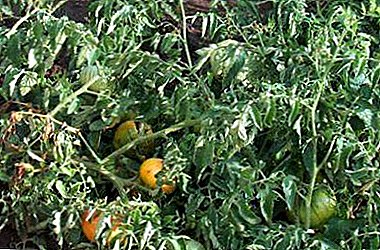 Improper care of the plant, non-compliance with the conditions of detention.
Improper care of the plant, non-compliance with the conditions of detention.- Too dense planting culture.
- Increased acidity of the soil or too heavy soil with stagnant moisture, preventing proper air exchange to the roots of the plant.
- The excess in the soil of chemicals or fertilizers with a high content of chlorine.
- Improper planting placement. For example, too close to the highway, industrial area or metallurgical plant.
- Insufficient watering, leading to dry roots and weakening of the plant.
- Too high temperature or excessive humidity for a long time.
What is dangerous disease?
This disease is dangerous because it withers not only the foliage of the infected culture, but also its main branch, rotting roots, and the bush eventually dies out. If Fusarium is not recognized in time and measures are not taken to cure the plant, it will not only perish itself, but will also infect its fellows through the soil through the soil.
Symptoms in different cultures and treatments
In recent years, not only agricultural crops (legumes, grains, melons), but almost all grown vegetables (tomatoes, cucumbers, peppers, potatoes, cabbage), and bulbous plants (onions, garlic, tulips, hyacinths, tulips , daffodils), berry bushes (currants, gooseberries, strawberries, strawberries) and fruit trees (plums, apples, pears, peaches, apricots).
How to deal with fusarium?To eliminate fusarial disease and prevent it from spreading, the following control measures are used:
- Reject and destroy completely already infected copies.
- Spray the remaining healthy plants and soil with a solution of potassium permanganate with boric acid.
- It is also recommended to sprinkle the beds with ash and powdered sulfur.
- Chalking with chalk and dolomite flour helps to reduce the risk of Fusarium disease, since this fungus does not tolerate a neutral soil environment saturated with calcium.
To date, various fungicides have been developed and successfully used, whose action is aimed at combating a fusarium fungus:
- Benefit.
- Winner.
- Phytosporin.
- Sporobacterin and many others.
How to deal with gray mold on cucumbers?
 How to detect:
How to detect:
- Fusarium affects the vascular system of the cucumber bush. If you cut a stalk or a leaf of a cucumber, darkened vessels will be visible on its cut.
- Fusarium wilt can be identified by the beginning rotting of the hilar neck and shrub roots. The stem in this place darkens and becomes thinner, and the leaves turn yellow and fade. The plant does not bloom well, and its ovaries die off after flowering.
Fusarium cucumber is dangerous because it is not invented against this fungus for a 100% effective method of control. Therefore, it is better to prevent the development of the disease through preventive measures than to deal with it later.
Prevention measures:
- Soil treatment. Disinfection with boiling water or green mans obtained from lupine and mustard.
- Compliance with temperature. For example, cucumber seedlings are hardened in a greenhouse, before planting in open ground. This further makes the leaves of adult plants more resistant to fading.
- Correct watering. Avoid excessive waterlogging.
Biological preparations and fungicides can be used as preventive measures to combat the fusarial wilting of cucumbers.
Consider them.
Biological products:
- "Trikhodermin" - It is considered the most effective means of this series. Make it necessary to slightly moistened soil for 2 days before transplanting seedlings.
- "Baktofit", "Planriz" and "Trihofit" - good prophylactic agents for spraying seedlings and soil.
Chemicals:
- The fungicide "Fundazol" - the most effective means to fight the fungus. Used for seed treatment before sowing.
- "Previkur Energy" - it is intended for processing of seeds before disembarkation in the soil.
We recommend to watch a video about cucumber fusarium wilt:
Strawberry treatment
How to detect the disease:
- The ground part of the strawberry bush and the root system become brown.
- The leaves turn yellow and dry. The ovaries are not formed, the antennae become brown and deform.
How to fight:
- Correct crop rotation on the plot: competent selection of strawberry precursors.
- Treatment of infected plants with the system fungicide "Fundazol". Benomyl is the active component of this drug, absorbed by the roots and leaves, moving up the plant, accumulating from its apical part. The main system function of "Fundazol" is that the protection extends to all organs of the plant, even those that the working composition does not fall on during the spraying.
- Fungicidal drug "Benorad" with a wide spectrum of action. It is very effective for the treatment and prevention of many fungal diseases of strawberries, including fusarium wilt. Active protection lasts up to 10 days during the growing season.
Ways to combat tomato disease
IMPORTANT: Tomatoes undergo fusarium at any stage of life, seeds may also be affected through the soil. But the signs of the disease appear only at the time of flowering or fruiting.
How to detect:
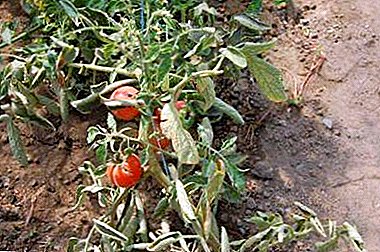 Lower tomato leaves turn yellow and fade. Then, the upper leaves of the bush begin to dry and wilt - they also turn yellow and deform.
Lower tomato leaves turn yellow and fade. Then, the upper leaves of the bush begin to dry and wilt - they also turn yellow and deform.- On a section of a stalk of a sick plant brown vessels are clearly visible.
- If the cut bush is held in a room with high humidity for 2 days, a white thin coating will appear on it.
How to fight:
- Preventive measures: disinfection of seeds and soil before planting tomatoes.
- Removal of the affected bushes with the root to completely eliminate the source of infection.
How to treat sunflower baskets?
Symptoms of the disease in sunflower appear after flowering, when the seeds begin to ripen. How the disease manifests itself:
- On the back side of the basket there appear slightly softened dark brown spots, which, in the course of the disease, cover its entire surface. The basket starts to dry quickly and harden.
- On the front of the basket between the seeds appears a gray patina. Mycelium penetrates into sunflower seeds, which become half-empty and bitter to the taste.
How to fight:
- Competent crop rotation.
- Sowing more resistant to fungal diseases varieties and hybrids of sunflower.
- Seed treatment before sowing.
- The treatment of seed and soil fungicides KKr or Title Duo.
Preventive measures
- The use of healthy seed stock.
- Growing varieties and hybrids that are resistant to this kind of disease.
- Planting seed in decontaminated beds.
- The introduction of nitrate nitrogen into the soil, which will help to slow down the development of the disease in the infected field.
- Preventing infection of new areas with healthy plants spores of the fungus, which may be brought in by agricultural machinery and equipment.
Conclusion
Not a single garden and field crop can be completely protected from infection with such a dangerous and rapidly developing disease as fusarium wilt. But preventive measures and timely detection of the disease will help save the crop and prevent the crop from dying.


 Improper care of the plant, non-compliance with the conditions of detention.
Improper care of the plant, non-compliance with the conditions of detention. Lower tomato leaves turn yellow and fade. Then, the upper leaves of the bush begin to dry and wilt - they also turn yellow and deform.
Lower tomato leaves turn yellow and fade. Then, the upper leaves of the bush begin to dry and wilt - they also turn yellow and deform.